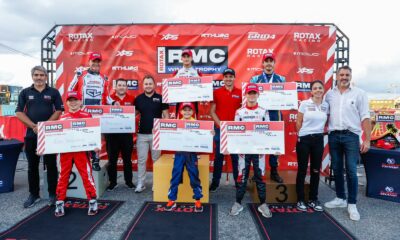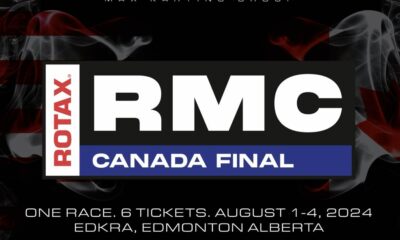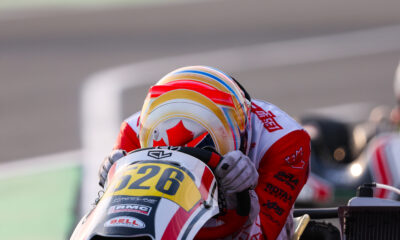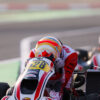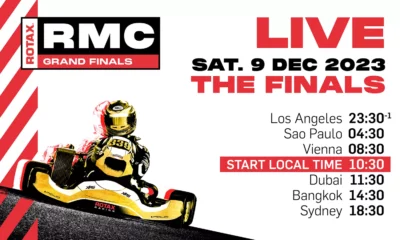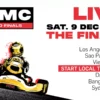CKN Exclusive
Column: Rotax Grand Finals – Through the Eyes of Mike Maurini
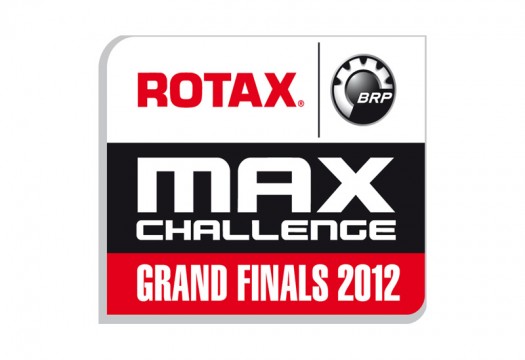 Heading to my sixth Rotax Grand Finals experience, I was still trying to overcome and catch up on some rest after the SuperNationals. With only 30 hours at home before my Wednesday flight to Miami to meet other members of Team USA, we were all finally on our way to Lisbon, Portugal on Thursday afternoon. With a seven hour flight and a quick three hour layover, leg two of the trip would see us fly to Faro where we would board one of the two buses would take us to the facility. Stopping along the way for an awesome Portuguese lunch just off the ocean, it was off to the hotel and a night of fun before heading to the track Saturday morning.
Heading to my sixth Rotax Grand Finals experience, I was still trying to overcome and catch up on some rest after the SuperNationals. With only 30 hours at home before my Wednesday flight to Miami to meet other members of Team USA, we were all finally on our way to Lisbon, Portugal on Thursday afternoon. With a seven hour flight and a quick three hour layover, leg two of the trip would see us fly to Faro where we would board one of the two buses would take us to the facility. Stopping along the way for an awesome Portuguese lunch just off the ocean, it was off to the hotel and a night of fun before heading to the track Saturday morning.
With not much planned for the day, the entire Team USA would go through the registration process and do several laps in the rental karts. Though it isn’t what they were racing, drivers who were unfamiliar with the circuit would be able to determine the lefts from the rights and learn some characteristics of the facility.
The Autodromo d’Algarve is stunning. Built into the side of a hill, the karting circuit sits adjacent to the car track as the motorsports complex is a stand-alone facility off in the hills. With multiple buildings, restaurants, bars and media centers, the owners and track workers did a pristine job in setting up the location. Not to mention, two massive tents that housed the 267 competitors were erected with drivers grouped by countries and classes in their respective tents. Mach 1, Haase, Birel and Sodi Kart had their rigs and tents already in place and the event was coming together. All the karts were built and housed under the team tent as they lined the temporary structure from end to end. Final prep on those karts was also being completed with the proper sponsors stickers being attached and radiators filled with water.
 The big talk of the entire week was weather. With high winds and rain threatening the area all week long, Rotax would narrowly make it through the kart draw day with very little precipitation. Having been at the Rotax Grand Finals five of the last seven years, last year I missed the kart draw day and the new process involved. In Italy in 2010, drivers drew a kart number from a bag and that was their kart for the week. Officially changing over last year in Al Ain, UAE, the electronic kart draw was new, as drivers would scan their barcodes to be allocated a kart.
The big talk of the entire week was weather. With high winds and rain threatening the area all week long, Rotax would narrowly make it through the kart draw day with very little precipitation. Having been at the Rotax Grand Finals five of the last seven years, last year I missed the kart draw day and the new process involved. In Italy in 2010, drivers drew a kart number from a bag and that was their kart for the week. Officially changing over last year in Al Ain, UAE, the electronic kart draw was new, as drivers would scan their barcodes to be allocated a kart.
With karts, toolboxes and lead now in the hands of the competitors, the final build process would take place on Sunday afternoon. Working hard to mount the seats and get everything in order for the race weekend, some tuners decided to strip the karts down to the bare frames while others just mounted a seat and they were gone for the day. With the first on track session not scheduled until Monday afternoon, drivers, families, tuners and team members would enjoy another night in Portugal.
Monday would see one on track session for each driver, as they would be forced to utilize a spec main jet and gear for their session. Running the circuit for the first time in their race karts, some drivers chose to break in their engines slowly while others were flat out from lap one. With a new set of tires before the session and only four on track sessions before qualifying, every lap was important over the next three days.
 In Rotax competition, series officials sure like their drivers meetings. With at least one, and sometime two scheduled for each day, drivers would again utilize their hard cards to check into the meetings. With a time specific schedule and tardiness not accepted, drivers who were late or did not show up for the meeting would be fined 400 Euro. With the electronic bar code scan, there was no need for role call, as a quick look at the computer screen would tell officials who was absent.
In Rotax competition, series officials sure like their drivers meetings. With at least one, and sometime two scheduled for each day, drivers would again utilize their hard cards to check into the meetings. With a time specific schedule and tardiness not accepted, drivers who were late or did not show up for the meeting would be fined 400 Euro. With the electronic bar code scan, there was no need for role call, as a quick look at the computer screen would tell officials who was absent.
After the fourth and final practice was complete on Wednesday morning, each class would go through the ever important qualifying session. With a very fast track and high winds, a draft was important to ensure an up front starting position for the main event. Qualifying would be run in 15-minute segments with a majority of the drivers waiting until the second half of the session before entering the track. A fast eight laps, with drivers playing chess with their karts to ensure a good draft, would then ensue. While some drivers who were fast in practice found them down the running order, others would excel in the two-kart train and qualify at the front of the field.
Wednesday night back at the hotel and the big discussion was the race starts. With tram lines, lights and nearly a 1000 foot run into the first braking zone, many tuners and drivers were expecting big incidents. With the hopes of very little damage, the starts seemed to go off with little trouble.
 My favorite thing of the Rotax Grand Finals is their video penalty system and how they can see the entire track with a few select cameras. If a driver is given a penalty, they are called to the steward’s office with a piece of paper that is brought to their pit spot by a Rotax official. Then there is a time window in which you must adhere to your penalty and go to the steward’s office. This is where the program gets cool. After being given a penalty, they show you on the video why, where and what part of the track the penalty occurred. They show you the actual footage and you sit there with the steward and view the video. Agreeing with the penalty, you would sign a piece of paper and the results would be changed to record your penalty…if you disagree, the video footage would then be viewed by another steward with his/her call the final call. In the end, I feel that all the penalties that were given out, for the most part, suited the on track action.
My favorite thing of the Rotax Grand Finals is their video penalty system and how they can see the entire track with a few select cameras. If a driver is given a penalty, they are called to the steward’s office with a piece of paper that is brought to their pit spot by a Rotax official. Then there is a time window in which you must adhere to your penalty and go to the steward’s office. This is where the program gets cool. After being given a penalty, they show you on the video why, where and what part of the track the penalty occurred. They show you the actual footage and you sit there with the steward and view the video. Agreeing with the penalty, you would sign a piece of paper and the results would be changed to record your penalty…if you disagree, the video footage would then be viewed by another steward with his/her call the final call. In the end, I feel that all the penalties that were given out, for the most part, suited the on track action.
The first Rotax Junior heat race was one for the ages. As the first wheel-to-wheel action of the week, the Juniors put on a show. With multiple passes and hard racing, drivers would gain and lose six-eight positions per lap with the draft and incidents that were happening around the track.
With rain coming in and out of the area, drivers and tuners would be switching from wet to dry weather setups throughout the week. With the servicing park/Parc Ferme procedure happening, these changes could only be made within the fifteen minute time limit before the closing of the grid. Once on the grid, only tire pressures could be checked and changed. One Rotax Senior heat would see a downpour happen while in the servicing park. With tuners scrambling to switch everything over, some lost track of time and would miss the closure of the grid gates. Once the grid gates close, you cannot enter your heat…and this procedure forced 11 drivers to miss their heat.
 With three heat races complete, points were calculated with the top 28 drivers transferring directly to Saturday’s pre final and final. The next 34 drivers would enter Friday afternoon’s Last Chance Qualifiers while the remaining 10-14 drivers in each class would be done for the week. The biggest news of the weekend would be Team Canada’s Pier Luc Ouellette. The two-time world champion would only complete five corners of racing action in the first two heats and would start near the tail of the LCQ. Working hard to move forward, PLO would only advance halfway through the field and for the first time in his career, would miss the Rotax Max Challenge Grand Finals main event.
With three heat races complete, points were calculated with the top 28 drivers transferring directly to Saturday’s pre final and final. The next 34 drivers would enter Friday afternoon’s Last Chance Qualifiers while the remaining 10-14 drivers in each class would be done for the week. The biggest news of the weekend would be Team Canada’s Pier Luc Ouellette. The two-time world champion would only complete five corners of racing action in the first two heats and would start near the tail of the LCQ. Working hard to move forward, PLO would only advance halfway through the field and for the first time in his career, would miss the Rotax Max Challenge Grand Finals main event.
With the weather and inconsistent heat races by several drivers, a lot of drivers who thought they were on the outside looking in actually made it into Saturday’s final phase. Team USA driver Sam Beasley just squeaked into the main event in 28th after the heat races and would not have to run the LCQ races, while for some big name drivers it was a must.
A new aspect to the Rotax Grand Finals in 2012 was the introduction of the Rotax Micro Max festival. Only for drivers from Spain and Portugal, the youngest drivers of the Rotax family would compete on the same circuit as their older counterparts. Using identically prepared Praga chassis, the Micro Max win would come down to a pair of drivers who would encounter slight contact on the final lap. Not able to modify anything or even change the jet, the carb and motor was sealed along with the coil and pipe being sealed to the motor. A spec spark plug and gear provided some great on track action and hopefully these youngsters will be future champions of our sport.
Saturday would open with a warm-up and prefinal before the opening ceremonies would take place. Truly the ‘Olympics of Karting,’ each country’s flag would begin to line the circuit in bleachers and up on the hill that overlooked the track. A colorful atmosphere would then take place as drivers would be awarded their participation medals and a country-by-country parade would take place down the long front straightaway.
With only four main events on the docket, the buzz in the paddock was high. With heat races being as fierce as what they were, everyone was expecting the finals to be an all out crash fest in every class. The juniors put on a great show with a lead pack of five battling hard before the eventual race winner, who started 22nd on the grid, drew away from his competition. Mid pack there was some rough and tough racing.
The Rotax Senior class would see multiple race leaders as the pack began to sort themselves out. More precise in their passing and blocking, contact in this division was far less than in the Junior ranks. DD2 Masters and DD2 drivers put on another great show as both winners were past champions of the event, showing just how experience and talent rises on the occasion.
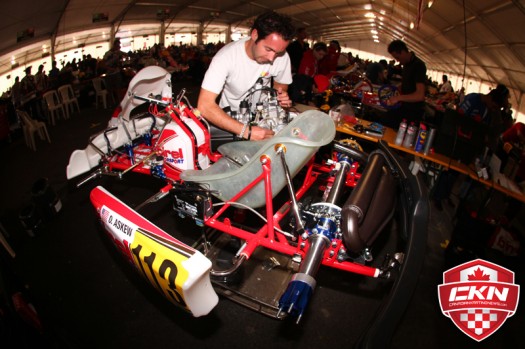 As far as me at the event, I was working for Florida Winter Tour Rotax Junior champion Oliver Askew and Team USA. With high hopes heading to the event, we would end second to last practice session with a top ten time. Feeling that our motor was not as good as others, we struggled for straight line speed throughout the week. Qualifying a disappointing 34th, Oliver progressed through the heat races with consistent results of 13th, 14th and 12th to directly transfer to Saturday’s wheel-to wheel action with a 16th place starting spot in the prefinal. Running in the top fifteen for the majority of the race, Oliver would encounter on track contact that would send him back t 27th before driving back forward to finish 19th.
As far as me at the event, I was working for Florida Winter Tour Rotax Junior champion Oliver Askew and Team USA. With high hopes heading to the event, we would end second to last practice session with a top ten time. Feeling that our motor was not as good as others, we struggled for straight line speed throughout the week. Qualifying a disappointing 34th, Oliver progressed through the heat races with consistent results of 13th, 14th and 12th to directly transfer to Saturday’s wheel-to wheel action with a 16th place starting spot in the prefinal. Running in the top fifteen for the majority of the race, Oliver would encounter on track contact that would send him back t 27th before driving back forward to finish 19th.
Starting the main even inside row ten, a poor start and opening lap would see him run just outside the top twenty. With lap times that would put him in the top ten, Askew had a solid drive forward and was running 11th before contact from behind sent him off the racing surface. Struggling hard to keep his momentum but losing spots for the remainder of the lap, Oliver would eventually cross the stripe with a 16th place effort.
Saturday night would see the after party take place at local nightclub. With a free drink voucher being provided by Rotax and five separate bars within one five-story building, the party would go until the wee hours of the morning. Saturday night would also see the final round of the World Tire Changing Challenge take place, where two-time world champion Wes Boswell reigned supreme yet again dismounting and mounting four Mojo tires in just over 36 seconds. Also announced that evening was the date and location of the 2013 Rotax Max Challenge Grand Finals. Heading to the United States for the first time ever, the world will descend on NOLA Motorsports Park in New Orleans, Louisiana much to the applaud of the Canadians and American in attendance.
With the largest Rotax Max Challenge Grand Finals event now complete and finally arriving back home after enduring the 26-hour trip back to Indianapolis, the 2012 season has officially come to a close. With 2013 just weeks away and the new racing season just around the corner, Rotaxians will once again begin their quest to represent their respective countries in what is quickly becoming one of the toughest races to win.




